
|
My VA-15
Executive Officer/ Commanding Officer Tour 1976-1979 (Updated
March 20th, 2024)
|
I will do updates as I receive new information and edit the text.
Please let me know if you find any errors in content or have any new information to add.
bo_smith@bellsouth.net
Introduction
Command
of fleet
squadrons is organized so that a
prospective Commanding Officer serves
a tour as the
Executive Officer (XO) before
"fleeting up" to relieve the Commanding
Officer (CO).
In my case, I completed VA-43 instrument requalification with VF-43 at NAS Oceana while still at AIRLANT. I completed the VA-174 PXO/CO A7E syllabus at NAS Cecil Field from June, 1976 trough October. I was XO of VA-15 from November, 1976 through December, 1977. I relieved Cdr Kel Huehn as Commanding Officer in Hangar Bay One of the USS America in Palma D'Majorca while on deployment to the Mediterranean Sea.
I became the CO ten years after I left the VA-15 VALION A4 1966/1967 Vietnam era Skyhawk squadron as a Lieutenant.
In my case, I completed VA-43 instrument requalification with VF-43 at NAS Oceana while still at AIRLANT. I completed the VA-174 PXO/CO A7E syllabus at NAS Cecil Field from June, 1976 trough October. I was XO of VA-15 from November, 1976 through December, 1977. I relieved Cdr Kel Huehn as Commanding Officer in Hangar Bay One of the USS America in Palma D'Majorca while on deployment to the Mediterranean Sea.
I became the CO ten years after I left the VA-15 VALION A4 1966/1967 Vietnam era Skyhawk squadron as a Lieutenant.
Getting settled in Jacksonville
Mary and I decided to live again in Orange Park. This time however, we had a home built in a new development called Park West. Heather was 12, Laura was 11, and Stacy was six. The superior schools in Orange Park drove our decision to live there. It turned out to be a wise decision.
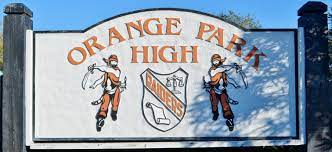 |
| Orange Park High
School and the
associated
middle and
elementary
schools were
excellent. |
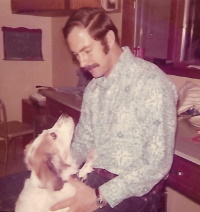 |
Bosco was still with us at Park West. I have always had a favorite dog in my life. Bosco was one of the best. From chasing tennis balls in Wichita in 1969 until; Park West, he was always a loyal friend! |
Pictures of Mary, Heather, Laura, and Stacy
So far I have found only one picture!
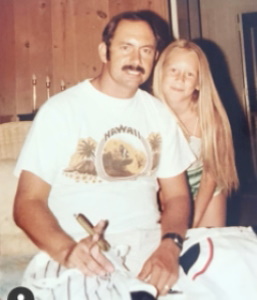
Stacy about 1977
Building our new home
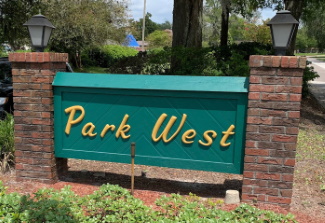
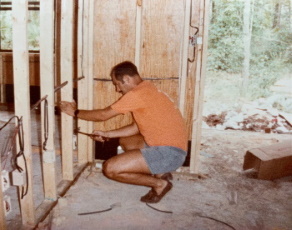 |
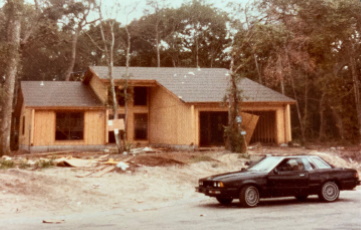 |
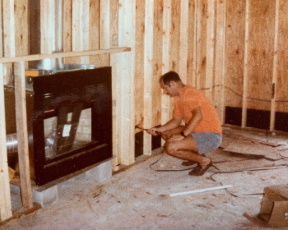 |
Our address was 575 Gulfstream Trail West
Schools
The girls
were not old
enough for
Orange Park
High School
yet.
(Although both Heather and Laura would go there while they were still living in Park West).
(Although both Heather and Laura would go there while they were still living in Park West).
In September, 1976 Heather was 12 and Laura was 11. They both attended Lakeside Junior High School in grades 6 (Laura) and 8th (Heather).
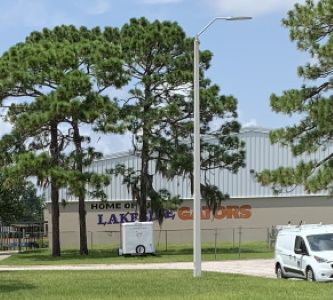 Lakeside
Gators
|
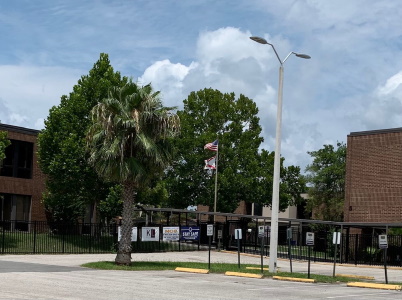 Lakeside
Junior High
School
|
Stacy
would have
been in 1st
grade at
Lakeside
Elementary
School which
was right next
to Lakeside
Junior High
School.
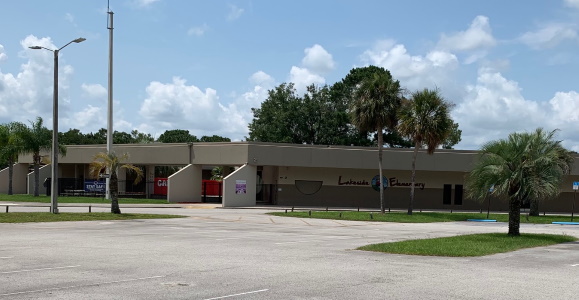 Lakeside
Elementary
School
|
VA-174
(June, 1976 - October, 1976)
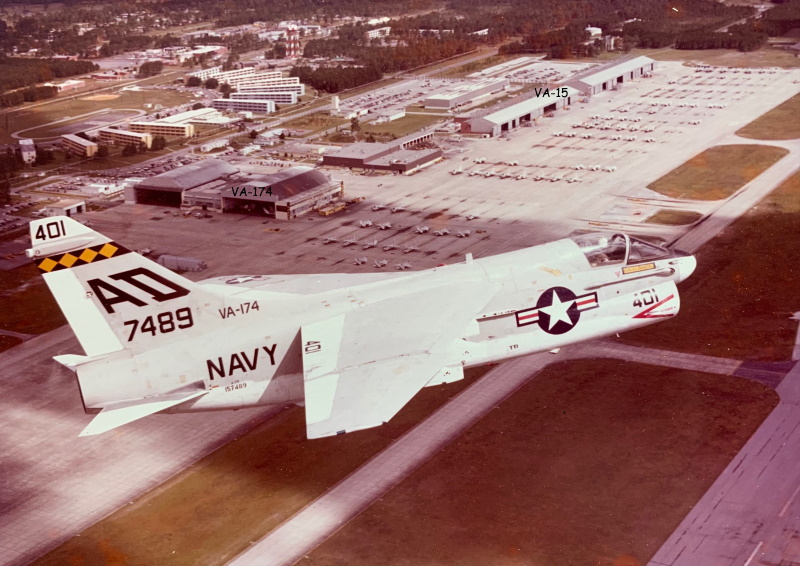 |
| This is a great picture of a VA-174 A7E flying over Cecil Field. The VA-174 hangars and ramp area is directly above the aircraft. The VA-15 hangar and ramp are on the right side of the double hangar complex second from the top. |
June 23rd, 1976
The
day before I started the
VA-174
syllabus (my
35th
birthday), I
flew in a
VA-45 TA4J to
Homestead Air
Force Base. That
morning a
VA-174 A7
which was one
of a section
two aircraft
flying a low
level route as
part of the
VA-174
syllabus had
collided with
a 585 ft
tower. I
was sent to
gather
information
for the
accident
investigation. The
aircraft had
hit and
severed a
guide wire.
The wire had
slid down
the starboard
side of the
aircraft
damaging the
leading edge
of the wing. The wire
had parted
with the
impact causing
the top 85ft
of the tower
to tumble to
the ground. The aircraft
had shook a
bit from the
impact but the
pilot was able
to land the
aircraft at
Homestead. I met with
the owner of
the tower and
with the local
sheriff.
Both were
very cooperative and had
not disturbed
any of the
aircraft and
tower debris.
The accident
board
concluded that
the A7 was
exactly at
500ft when it
impacted the
tower which
was the proper
altitude for
the low level
route that a
section of
aircraft was
using for the
mission. I
returned to
Cecil later
that afternoon
in the TA4.
The VA-174 Training Syllabus
There
were three
categories of
pilot training
in VA-174.
The full
length
syllabus was
designed for
students who
recently
earned their
wings
from
advanced jet
training or
who were
transitioning
from another
aircraft.
These students
were called
"RPs". The
Prospective
XO/CO syllabus
was shorter
than the RP
syllabus and
was especially
designed for
each PXO/CO
depending on
his experience
level in the
A7 aircraft.
The third
syllabus was for
prospective
CAGs
(Commander of
an air group),
was much
shorter and was
specially
designed based
on the
background and
wishes of each
PCAG.
Ground
Training
Completion of ground training was required of each RP before he/she was allowed to start the flight portion of the training. I say he/she because this was during the time that the first woman completed training at VA-174.
Completion of ground training was required of each RP before he/she was allowed to start the flight portion of the training. I say he/she because this was during the time that the first woman completed training at VA-174.
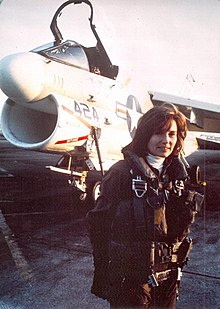 |
Left: Rosemary Conatser completed the VA174 RP syllabus in 1976 as the first woman to fly a single seat tactical aircraft. Right: Cdr Rosemary Mariner was the first woman to command a fleet squadron, VAQ-134. Captain Mariner retired from the Navy in 1997. She died of ovarian cancer in 2019. |
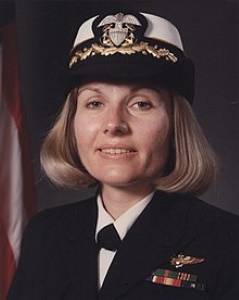 |
Ground Training Syllabus
The ground training syllabus consisted of completion of learning about the A7 systems, a simulator syllabus, blind cockpit check, requalify in swimming including the "Dilbert Dunker" (at NAS Jacksonville), ejection seat training, hypoxia training in a compression chamber, survival training, and Escape/Evasion/POW training (for those who were going to combat assignments).
Note: The blind cockpit check consisted of the pilot in training sitting in the seat of an actual aircraft (or in a simulator cockpit) blind folded with an instructor sitting on the canape rail. The instructor would call out a control lever, switch or a cockpit instrument. The student would then have to touch that lever, switch, or instrument without delay. A successful blind cockpit check was required prior to the first flight in a single seat aircraft.
Because of my previous background in flying a total of 940.0 A7 flight hours during my first RAG (111.7 hrs), my A7 fleet tour in VA-82 (733.9 A7 hrs.) and "proficiency" flying while at COMNAVAIRLANT (94.4 hrs hours), I did not have to complete the systems training and had a shorter simulator syllabus. But, I did have to requalify in swimming, the ejection seat, and hypoxia training in the pressure chamber. I was previously qualified in survival, evasion, escape, and POW training.
Flight Syllabus
I completed
my VA-174
PXO/CO flight
syllabus in
76.3 hours.
This included
basic flight including
acrobatics,
instrument
training
including an
instrument
check,
formation
flying including air
to air
refueling,
basic air combat
maneuvers, weapons
training at
MCAS Yuma,
Arizona, Field
Carrier
Landing
practice
(FCLPs) at
NAAF
Whitehouse,
and 10 day
arrested
landings
(traps) and
six night
traps onboard
USS Forrestal
CVA-59
November 14th
and 15th,
1976.
Scouting and Recruiting Nuggets
Scouting and Recruiting Nuggets
While I was going through my PXO/CO training, I carefully observed the flying skills and personalities of the RPs during the classes I flew with; especially at Yuma during weapons training, on liberty and during FCLPs and carrier qualification on Forrestal CVA-59. This group of RPs would be the source of first tour pilots (nuggets) for the squadrons going through workups prior to a deployment. This included VA-15 and our sister squadron VA-87. I identified the best pilots and potentially great shipmates. I communicated my preferences to someone I knew at BUPERS (Bureau of Naval Personnel) who dealt with preparing the orders for the new VA-174 RP graduates. All my request were satisfied except one. An outstanding graduate, Matt Moffet was assigned to our sister squadron, VA-87. It turned out that his brother, Mike Moffet was already in VA-15 so BUPERS sent Matt to the same airwing but a different squadron.
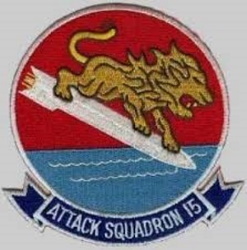 |
I reported to VA-15 as the Executive Officer in November, 1976 |
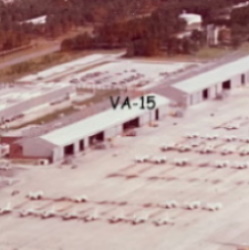 |
Pictures for this section come from my files, the Scrapbook (my departure gift), and Google
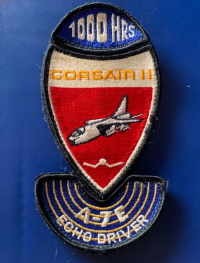 |
I reported to VA-15 with 1016.3 A7 flight hours |
Turnaround Training Flight Time and Related Activities
November, 1976
I
flew 7 A7E
flights in
November (14.0
flight hours).
The
concentration
seems to have
been on
instrument
flights with
actual
instrument
TACAN and GCA
approaches.
One was a
night flight
with 2.5 hours
of night time
(2.0 hrs of
actual
instrument
time).
December, 1976
I
flew 7 A7E
flights in
December (14.5
flight hours).
The
concentration
seems to have
been on
instrument
flights with
actual
instrument
TACAN and GCA
approaches.
January,
1977
MCAS Yuma Weapons Det
MCAS Yuma Weapons Det
January
was dedicated
to a weapons
detachment at
MCAS Yuma
On January 7th, we flew from Cecil to NAS Dallas, TX.
|
NAS
Dallas patch
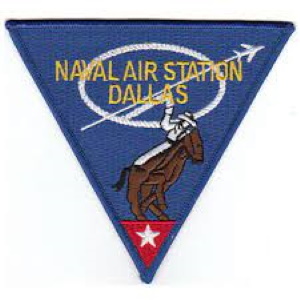 |
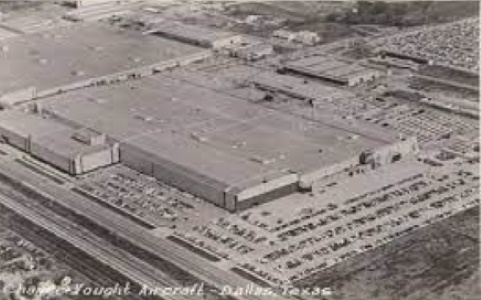 LTV Plant- Grand Prarie, Texas |
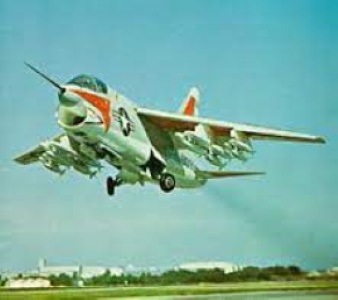 A7E Test Aircraft |
I
had arranged a
tour of the
LTV plant in
Grand Prairie
where the A7
was
manufactured
Can anyone idenitfy the LTV NAVPRO guys?
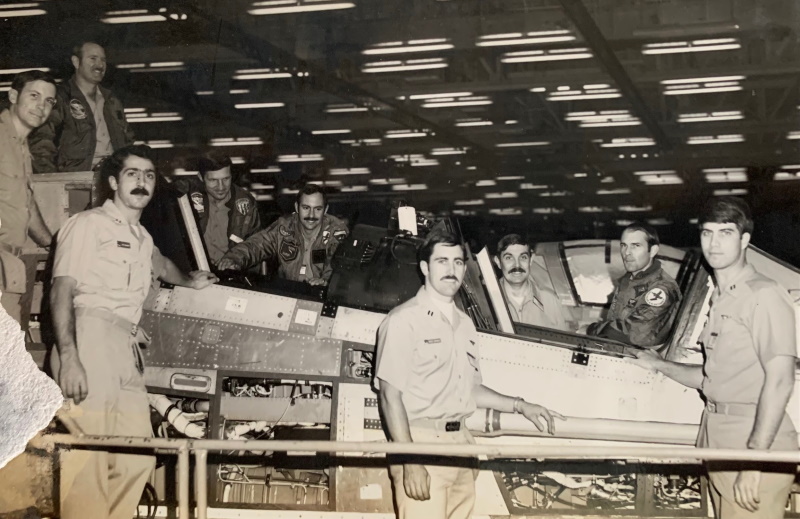 |
| Back
Row Left to
Right: LTV
NAVPRO
REP.Frank
Gerwe, Kel
Huehn, Bo
Smith, Bob
Maloney, Tom
Mitchell Front Row Left to Right; Boh Chimenti, Lt Greg Grimmard, LTV NAVPRO Rep. |
Can anyone idenitfy the LTV NAVPRO guys?
On January 8th, we flew from Dallas to Yuma.
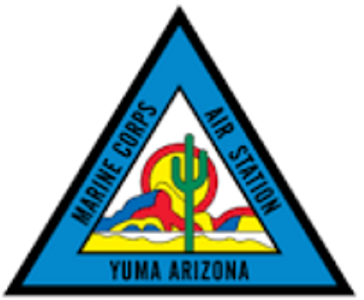 |
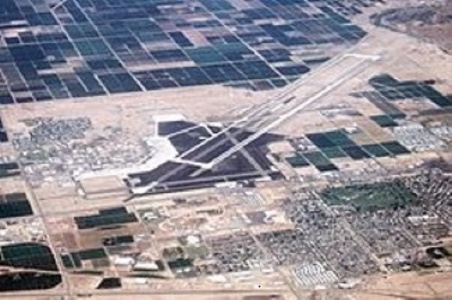 |
I flew 12 weapons training flight from January 10th to January 21st. Three of those flight were night weapons delivery flights.
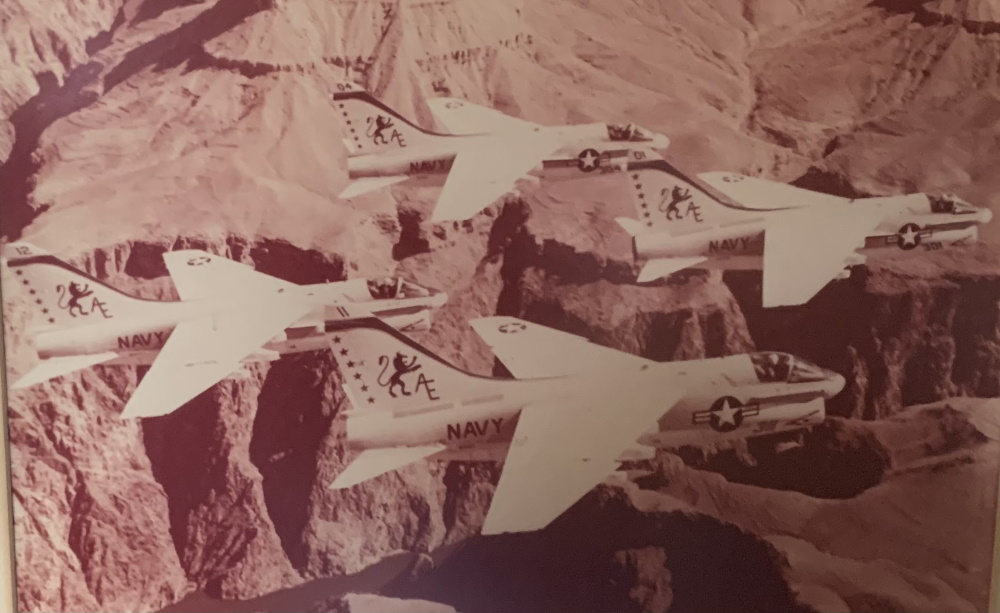
One
of these
flights at
Yuma involved
this excellent
diamond
formation
picture.
The short Yuma weapons det was a great way to start 1978. After all, bombing is what we do!
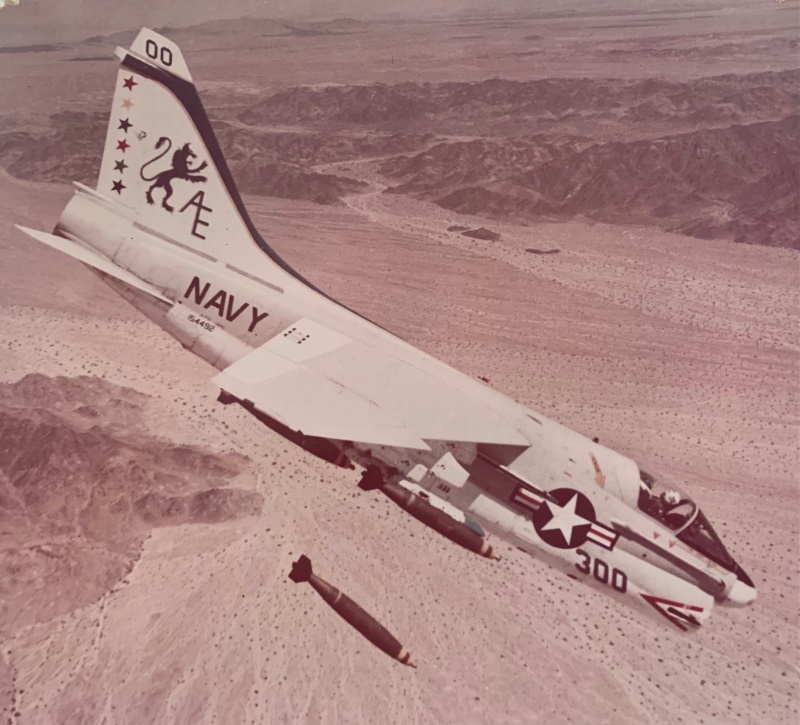 |
After my last weapons flight on January 21st, I flew from Yuma to NAS Alameda, CA arriving before sunset.
I flew from Alameda to Albuquerque, NM.
On January 23rd, I flew from Albuquerque to Cecil.
In total, I flew 21 flights (50.9 A7E flight hours) in January, 1977
February, 1977
FCLPS and Fly On to USS America/REFTRA
February
1st through
February 2nd
was dedicated
to FCLP at
Whitehouse (4
day flight and
5 night
flights).
On February 25th, we flew out to the America.
On February 27th, I flew one day flight and one night flight recording 2 day traps and 2 night traps.
My total flight time for February was 13 flights ( 21.6 flight hours)
On February 25th, we flew out to the America.
On February 27th, I flew one day flight and one night flight recording 2 day traps and 2 night traps.
My total flight time for February was 13 flights ( 21.6 flight hours)
March and April, 1977
In March
and April we
conducted Type
Training
onboard
America
March 3rd-March 31st- I flew 18 flights (33.0 flight hours) during type training.
April 1st-April 23rd- I flew 17 flights (27.0 flight hours) during type training.
The fly off to Cecil took place on April 23rd.
I logged my 300th trap aboard America on April 20th, 1977
May,
1977
Type Training/ORE/ Exercise Solid Shield
Type Training/ORE/ Exercise Solid Shield
May
2nd-May 5th- I
flew 9 flights
from Cecil
(mostly
weapons
training)
* On May 5th, I completed Day and night weapons compexes (competitive exercises)
May 6th- Fly on America for Type Training Two
May 10th-May 22nd- I flew 14 flights as art of TT2
May 23rd- Fly Off to Cecil
In total, I flew 26 flight in May (46.0 flight hours)
* On May 5th, I completed Day and night weapons compexes (competitive exercises)
May 6th- Fly on America for Type Training Two
May 10th-May 22nd- I flew 14 flights as art of TT2
May 23rd- Fly Off to Cecil
In total, I flew 26 flight in May (46.0 flight hours)
June
and July,
1977
South American Deployment
Pictures for this section come from my files, the Scrapbook (my departure gift), the Rio Cruise book and Google
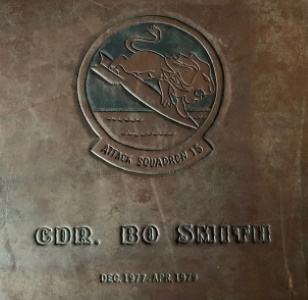 Scrap
Book
|
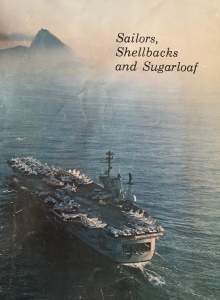 Rio
Cruise Book
|
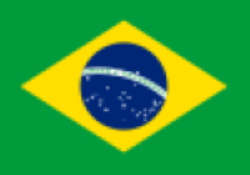 |
June
6th- FCLPs
Whitehouse
June 10th- Fly On for transit and operations off the coast of South America
June 11th-June 18th- flight operations off the coast of South America. I don't remember if we were part of a UNITAS Exercise or
independent operations in connection with an important July 4th visit to Rio de Janeiro.
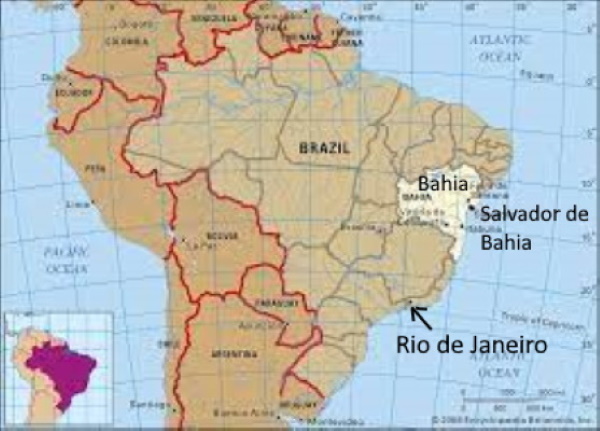
Crossing the Equator- June 19th, 1977
It is a long maritime tradition that when a ship crosses the Equator, those who have not done so before (Pollywogs) must receive instruction by those who have (Shellbacks) before they can properly enter the realm of King Neptune!
Crossing the Equator Certificate
June 10th- Fly On for transit and operations off the coast of South America
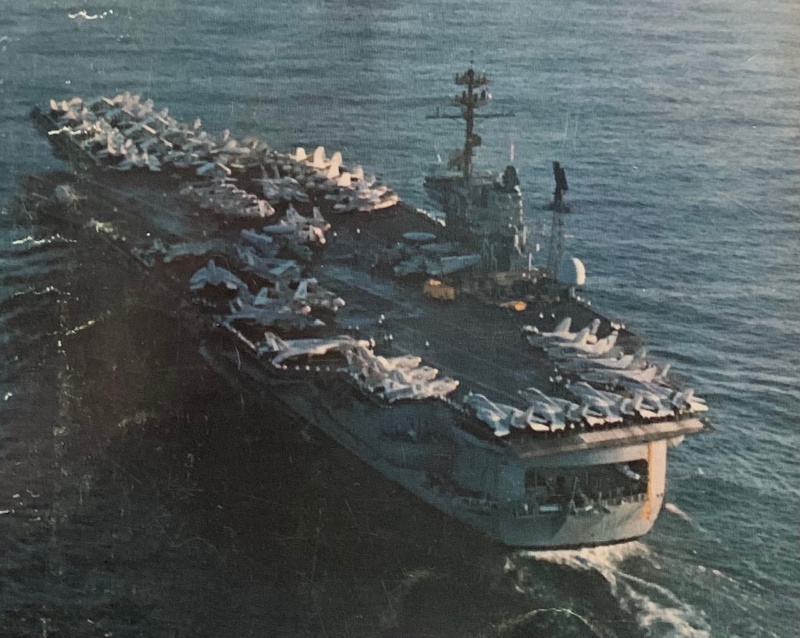 America
is headed
south
|
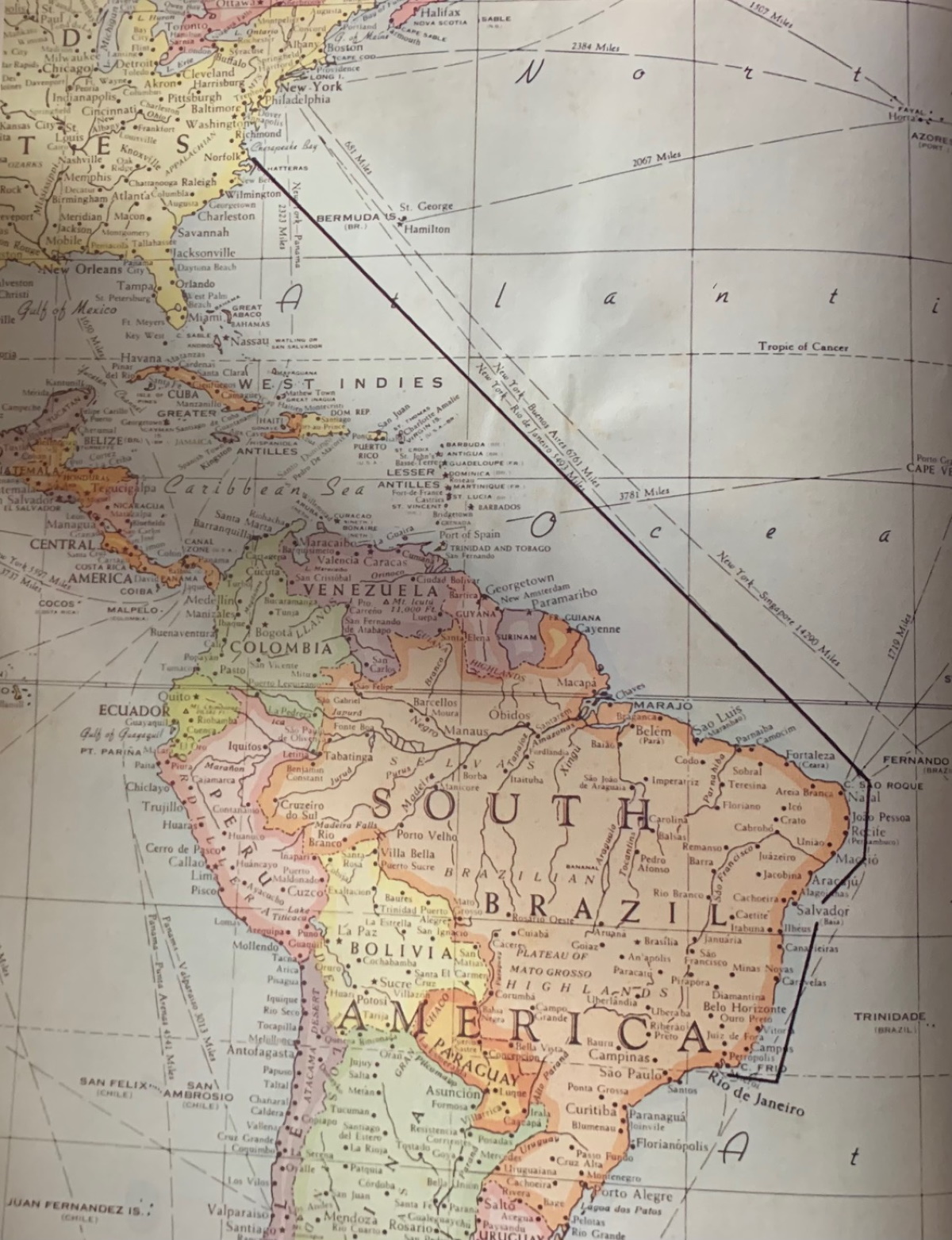 |
June 11th-June 18th- flight operations off the coast of South America. I don't remember if we were part of a UNITAS Exercise or
independent operations in connection with an important July 4th visit to Rio de Janeiro.

| We
had two port
visits during
our deployment
of the coast
of South
America |
Crossing the Equator- June 19th, 1977
It is a long maritime tradition that when a ship crosses the Equator, those who have not done so before (Pollywogs) must receive instruction by those who have (Shellbacks) before they can properly enter the realm of King Neptune!
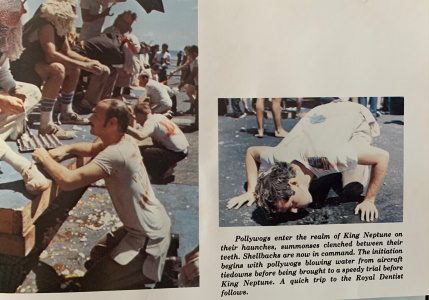 The
lowly Polywogs
enter the
realm of King
Neptune on
their
haunches. The
Shelllbacks
are in
command.
|
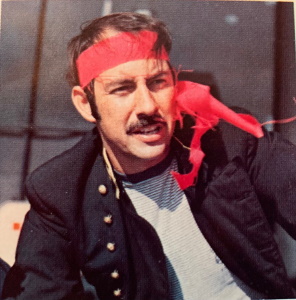 As
a seasoned
Shellback, I
was a member
of King
Neptune's
Court.
|
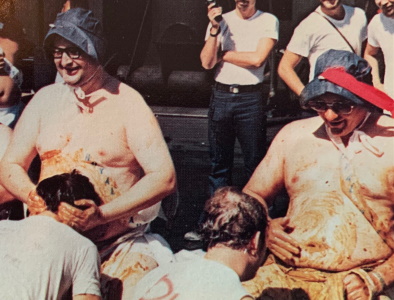 The
final task
before
acceptance was
to kiss the
"Royal Baby",
usually crusty
Chief Petty
Officers
|
Crossing the Equator Certificate
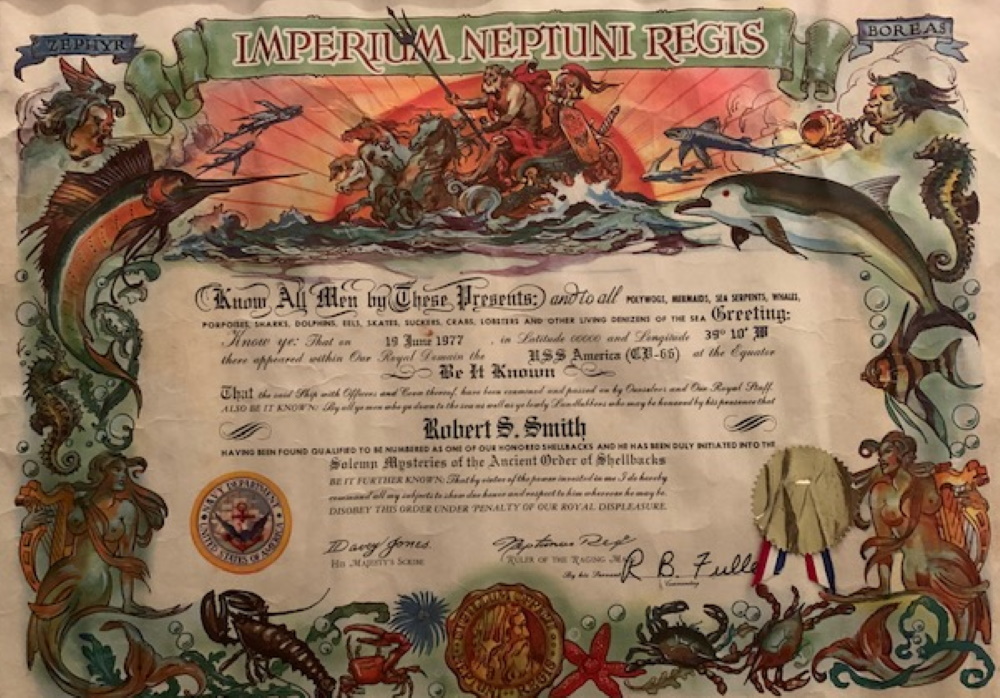 |